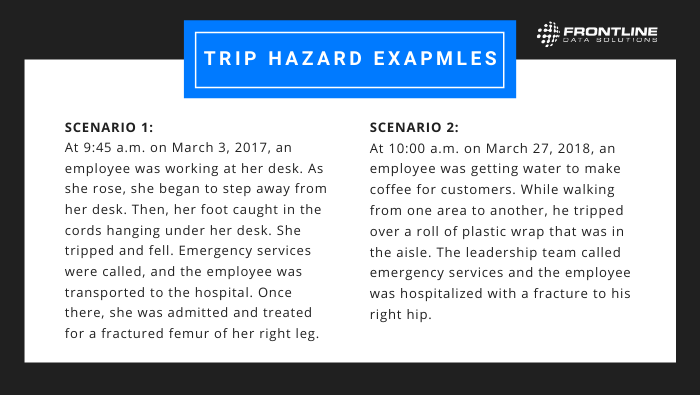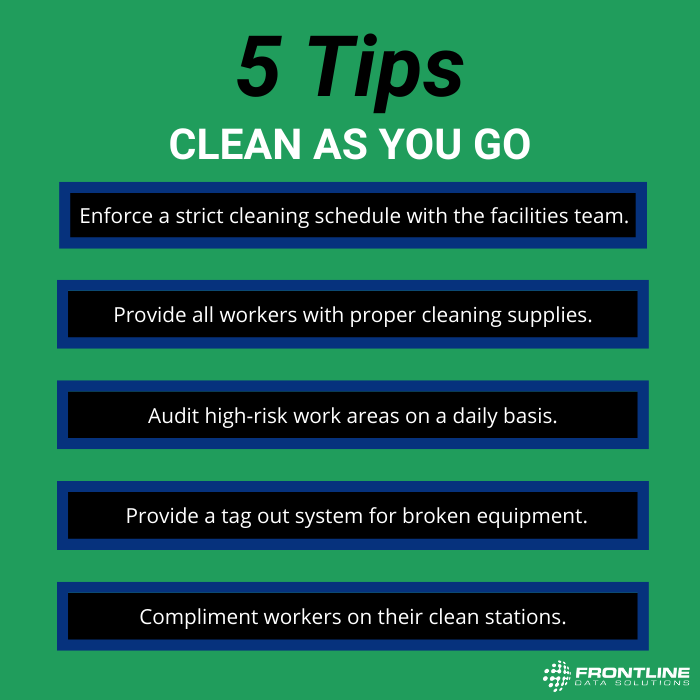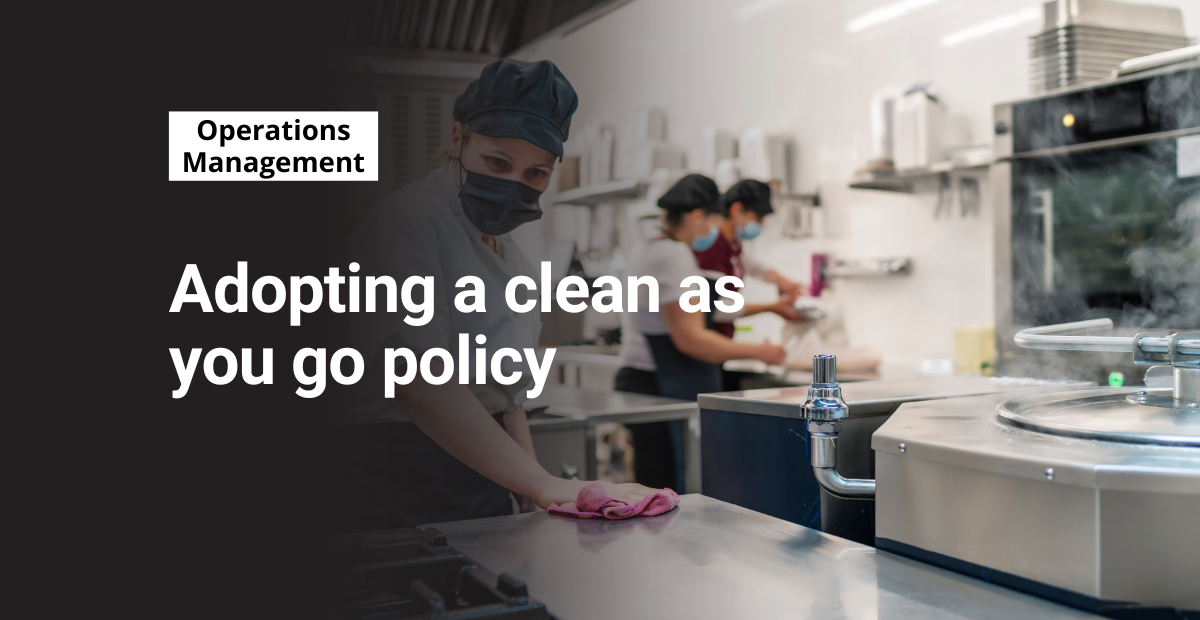There were 805 workplace fatalities due to falls, slips, and trips in 2020. It doesn’t take much investigation to see the role that unkempt workstations played in the outcomes. Thankfully, adopting a clean as you go policy is one of the simplest ways you can prevent these types of workplace injuries and fatalities.
What is a clean as you go policy?
The term “clean as you go” means exactly what it sounds like—the practice of continuously tidying your workspace.
With something as simple as a strong clean as you go policy, you can:
- Prevent injuries and deaths
- Reduce operational downtime
- Save costs related to equipment repair and replacement
- Avoid expensive lawsuits
- Reinforce positive safety culture
And the benefits stretch beyond your TRIR and other indicators of safety performance. Research shows that clean workspaces help not only with workplace safety, but with productivity as well.
Why should I teach the clean as you go approach?
Regardless of whether you work on an assembly line, on a rig, on the road, or from an office, a clean as you go policy can boost productivity and prevent safety incidents.
A Princeton University study in The Journal of Neuroscience found that the brain struggles to devote attention to a task when there are too many irrelevant stimuli present. In other words: clutter is distracting. And it can cost your operation a lot in the way of productivity.
According to Aberdeen Strategy & Research, a single hour of operational downtime costs $260,000 on average. And if that downtime is the result of an injury or fatality, the cost skyrockets.
Consider these two trip hazard examples:

A clean as you go policy addresses these types of hazards by encouraging vigilance. In the first scenario, the worker could have contacted IT about better cable management. In scenario 2, the worker could have picked up the plastic wrap before getting the water.
But many workers aren’t trained to spot and address these hazards. They’re taught to prioritize customers and productivity. And so, a simple hazard leads to an expensive outcome.
Without more context and information, it’s impossible to know exactly the root cause of these incident examples. But it is obvious that a lack of workspace organization contributed to the injuries.
When you empower your employees to take ownership of their workstation cleanliness, you also build a safety mindset that reaches other areas of the operation. And while “clean as you go” isn’t a complicated idea, it’s not always easy to adopt.
How do I adopt a clean as you go policy at my site?
The hardest part about using a clean as you go approach is that it’s behavior-based. You have to create an environment where workers understand and respect their role in preventing safety incidents.
This starts with your training program. In fact, it should be part of your onboarding safety training, not a supplementary lesson that people learn once they’ve already started.
In the training, you want to emphasize the benefits of keeping a workspace clean. Here are some examples of what you might include:
You won’t have as much cleaning to do at the end of your shift if you do it throughout the day.
Studies show that it’s easier to focus on the quality of the work you’re doing when you have a clean workspace.
Picking up throughout your shift will make you less likely to get injured.
The goal here is to focus on positive behaviors that you want to encourage. It’s as simple as reversing the wording.
So, instead of saying “Don’t leave garbage on the floor,” you should say “keep the floor clean.”
It might seem like a trivial approach, but these small details in safety communication compound quickly. Instead of sowing fear among your workers, you communicate that they have direct control over their personal safety.
As always, this trickles down from the top. The other key to making your clean as you go policy work is practicing what you preach.
If workers get the sense that their cleaning efforts don’t matter, they lose motivation over time. This increases the chance of safety incidents. And it creates an apathetic mindset that can ruin productivity goals.
Check out these simple suggestions for promoting the clean as you go policy:

By consistently picking up trash, removing hazards, and following 5S, you show workers the importance of these habits. And if you’re trying to sell cleanliness as a safety measure, you have to commit. If you do, you’ll save money and time for equipment repairs, deep cleaning protocols, and costly workplace incidents.
Other posts you might like…
No posts
